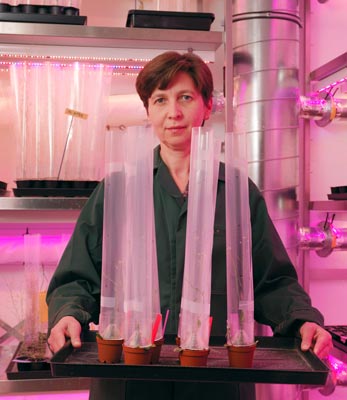April 24, 2014
All signals on green
Current Biology paper explains how hormone interaction contributes to plant development • Mechanism similar to traffic lights regulates direction • IST Austria team describes novel way of auxin flow polarization driven by cytokinin

Plant hormones auxin and cytokinin control many events in plant development, and crosstalk between the two occurs at several levels. The direction in which auxin flows is crucial for plant development and responses to stimuli from the environment. Auxin flow changes direction rapidly, but which cues and mechanisms are responsible for these dynamic changes is so far scarcely understood. In a newly published paper in Current Biology, a team of researchers around Eva Benkova, Assistant Professor at IST Austria, including first author Peter Marhavý, Postdoc at IST Austria, and Jiri Friml, Professor at IST Austria, show that cytokinin acts as a polarization cue that controls the direction of auxin flow; a process that can be compared to traffic lights giving directions for the flow of vehicles.
(DOI: http://dx.doi.org/10.1016/j.cub.2014.04.002)
The direction in which auxin flows is largely defined by PIN (stands for Polar Auxin) transporters. They transport auxin from the cell, and are polarly located on only some membranes of the cell. The flow of auxin depends on where PIN transporters are. The polarity of PIN is highly dynamic, and this change of polarity during development is crucial in the development of plant organs and tropic responses (bending of organs towards light or gravistimulation). In their paper, the researchers show that during the lateral root primordia development in Arabidopsis, cytokinin eliminates the PIN1 transporter on membranes parallel to the tip of the new root, but does not eliminate PIN1 on membranes perpendicular to the root tip. This directs the auxin flow towards the tips of newly formed primordia. The researchers also show that the removal of PIN proteins only at the membranes parallel to auxin flow depends on the degree to which PIN proteins are phosphorylated, as dephosphorylated PIN1 is much more sensitive to cytokinin than phosphorylated PIN1. Auxin flow towards the root tip is therefore guided by PIN1 removal through cytokinin, which in turn depends on the phosphorylation of PIN1. These results reveal a conceptually novel way of auxin flow polarization driven by cytokinin during development.



